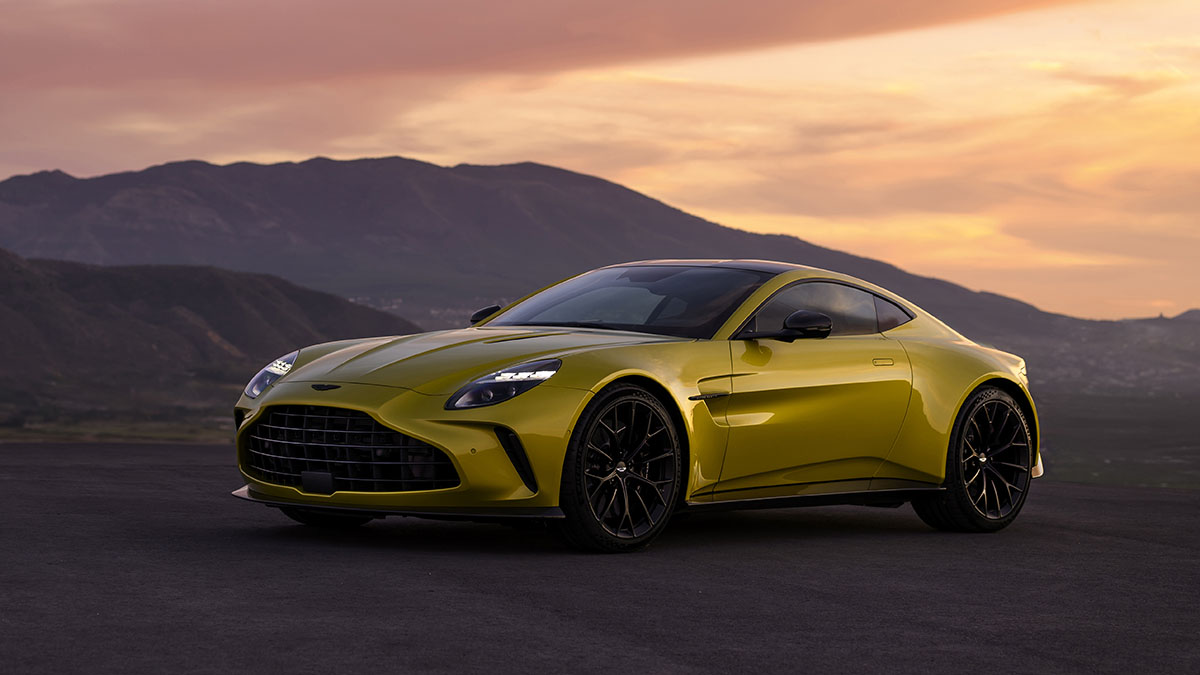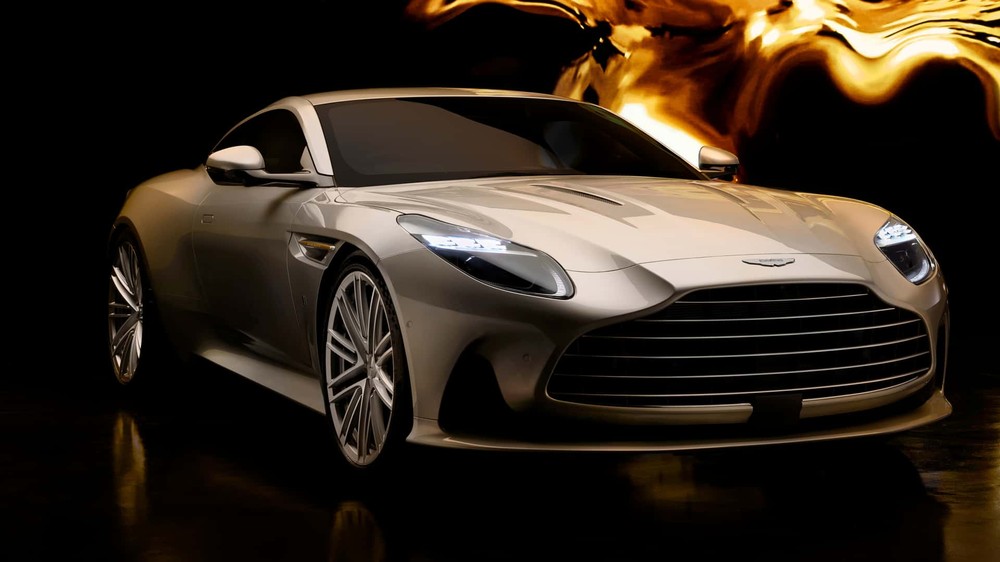The Epitome of British Automotive Excellence: Exploring the Legacy of Aston Martin
1. Introduction
The name Aston Martin instantly conjures images of sleek, powerful, and undeniably elegant automobiles. Synonymous with British heritage, high performance, and a certain air of sophistication, Aston Martin has captivated enthusiasts and collectors for over a century. More than just a car manufacturer, Aston Martin embodies a legacy of craftsmanship, innovation, and iconic status, forever cemented in popular culture through its enduring association with the legendary James Bond. This essay will delve into the rich history, defining characteristics, iconic models, and significant impact of Aston Martin on the global automotive landscape, tracing its journey from humble beginnings to its current position as a symbol of ultimate British automotive excellence.
2. The Founding and Early Years: A Legacy Begins

The story of Aston Martin began in 1913 with Lionel Martin and Robert Bamford, who initially formed a partnership to sell Singer cars and later began modifying them for racing. Their first car, officially named Aston Martin after Lionel Martin’s successful Aston Clinton Hill Climb races, was produced in 1915. The company’s early focus was heavily geared towards motorsport, participating in various races and hill climbs, establishing a reputation for performance and engineering prowess. The interwar period saw the development of several notable early models, but the company faced numerous financial challenges and underwent several changes in ownership, a pattern that would recur throughout its history. Despite these hurdles, the core principles of performance and elegant design began to take root, laying the foundation for the brand’s future identity.
3. The David Brown Era: Defining the Grand Tourer

A pivotal moment in Aston Martin’s history arrived in 1947 with its acquisition by industrialist David Brown. This era, often referred to as the “DB era,” marked a period of significant growth and the creation of some of the brand’s most iconic models. Brown’s investment and vision allowed Aston Martin to solidify its focus on producing high-performance grand tourers – luxurious cars designed for comfortable and stylish long-distance driving. The “DB” series, starting with the DB1 and culminating in the legendary DB6, became synonymous with sophistication, performance, and British craftsmanship. Notably, the DB5, introduced in 1963, achieved global fame through its prominent role in the James Bond film “Goldfinger,” forever linking the brand with the iconic spy and cementing its place in popular culture. Aston Martin also enjoyed success in motorsport during this period, winning the prestigious 24 Hours of Le Mans in 1959, further solidifying its performance credentials.
Related articles 01:
1. https://minidanang.com/5-compelling-reasons-why-you-should-consider-buying-a-mini/
5. https://minidanang.com/small-wonders-on-wheels-exploring-the-best-compact-car-designs-of-2025/
4. Navigating Challenges and Ownership Changes

Following the David Brown era, Aston Martin continued to produce compelling vehicles but faced recurring financial difficulties, leading to a series of ownership changes throughout the late 20th century. Models like the V8 Vantage, introduced in the 1970s, showcased the brand’s commitment to powerful performance, while the futuristic Lagonda attempted to push the boundaries of luxury and technology. In the 1980s, Ford Motor Company acquired a controlling stake in Aston Martin, providing much-needed investment and stability. The Ford era saw the introduction of the DB7, a crucial model that revitalized the brand and paved the way for its modern resurgence. While Ford’s ownership brought stability, the core essence of Aston Martin as an independent British marque remained a strong undercurrent.
5. The Modern Era: Renewed Focus and Innovation
The early 21st century marked another significant turning point for Aston Martin. In 2007, Ford sold the company to a consortium led by David Richards, the chairman of Prodrive, a renowned British motorsport and engineering firm. This new ownership brought a renewed focus on design, performance, and modern technology while respecting the brand’s rich heritage. Models like the DB9, introduced in 2004, were instrumental in establishing a new design language and a modern interpretation of the classic Aston Martin grand tourer. Subsequent models like the DBS, Vantage, and Rapide further expanded the brand’s portfolio, showcasing its ability to blend breathtaking design with exhilarating driving dynamics. Aston Martin also forged technical partnerships, notably with Mercedes-AMG, for the supply of engines and technology, ensuring its vehicles remained competitive in terms of performance and innovation.
6. Key Characteristics and Brand Pillars of Aston Martin

Several key characteristics and brand pillars define the essence of Aston Martin:
- Elegant and Timeless Design: Aston Martin vehicles are instantly recognizable for their elegant and timeless design. Characterized by flowing lines, muscular curves, and a distinctive front grille, their aesthetic is both sophisticated and undeniably alluring.
- Powerful Performance and Driving Dynamics: While luxury is paramount, Aston Martins are also engineered for exhilarating performance and engaging driving dynamics. Powerful engines, often sourced from or co-developed with Mercedes-AMG, provide impressive acceleration and a thrilling driving experience.
- Luxury and Craftsmanship: The interiors of Aston Martin cars are showcases of exquisite craftsmanship. Using the finest materials, including hand-stitched leather, real wood veneers, and meticulously crafted metalwork, the brand creates luxurious and bespoke environments for its occupants.
- British Heritage and Exclusivity: Aston Martin proudly embraces its British heritage, a key aspect of its brand identity. The exclusivity of the brand, with its limited production numbers and premium pricing, further enhances its desirability.
- Association with James Bond: The enduring association with James Bond has played a significant role in shaping Aston Martin’s global image, portraying it as the car of choice for the sophisticated and discerning secret agent.
7. Iconic Aston Martin Models and Their Significance
Related articles 02:
1. https://minidanang.com/mini-do-ca-nhan-hoa-bieu-tuong-thoi-trang-theo-cach-cua-ban/
2. https://minidanang.com/aston-martin-an-icon-of-british-luxury-performance-and-enduring-style/
3. https://minidanang.com/mini-adventures-maximizing-your-camping-experience-with-a-mini-cooper/
5. https://minidanang.com/the-chic-and-the-quirky-weighing-the-pros-and-cons-of-owning-a-mini/
Beyond the “DB” series, several other Aston Martin models have achieved iconic status:
- DB5: As mentioned earlier, its James Bond connection solidified its legendary status and made it one of the most recognizable cars in the world.
- DB9: This model marked a successful revival for the brand in the 21st century, introducing a new era of elegant design and potent performance.
- Vantage: Known for its agility and driver-focused handling, the Vantage represents Aston Martin’s more hardcore sports car offering.
- DBS Superleggera: Representing the pinnacle of performance and luxury in the current lineup, the DBS Superleggera embodies the brand’s commitment to high-performance grand touring.
- DBX: Aston Martin’s first foray into the luxury SUV market, the DBX aims to broaden the brand’s appeal while retaining its core values of design and performance.
- Vanquish: A powerful and beautifully designed grand tourer that further cemented Aston Martin’s reputation in the modern era.
- Vulcan: A limited-edition, track-only hypercar that showcased Aston Martin’s extreme performance capabilities.
8. Aston Martin’s Impact and Future Outlook

Aston Martin has played a significant role in shaping the perception of British luxury and performance cars on a global scale. Its vehicles are coveted by enthusiasts and collectors worldwide, representing a blend of artistry, engineering, and heritage. While the brand has faced financial challenges throughout its history, its enduring appeal and commitment to its core values have allowed it to persevere. Looking towards the future, Aston Martin is embracing electrification and exploring new technologies while remaining dedicated to its heritage of producing exquisitely crafted and high-performing automobiles. The brand’s commitment to both its rich past and a dynamic future ensures its continued relevance in the ever-evolving luxury car market.
9. Conclusion
In conclusion, Aston Martin stands as a true icon of British automotive excellence. From its early racing endeavors to the creation of timeless grand tourers and its enduring association with James Bond, the brand has consistently delivered vehicles that embody elegance, performance, and a distinctive sense of British style. Despite navigating various challenges throughout its history, Aston Martin has remained true to its core principles, captivating generations of enthusiasts with its breathtaking designs and exhilarating driving experiences. As it embraces the future with innovation and a continued commitment to its heritage, Aston Martin’s legacy as a symbol of automotive artistry and British engineering prowess is set to continue for many years to come.









